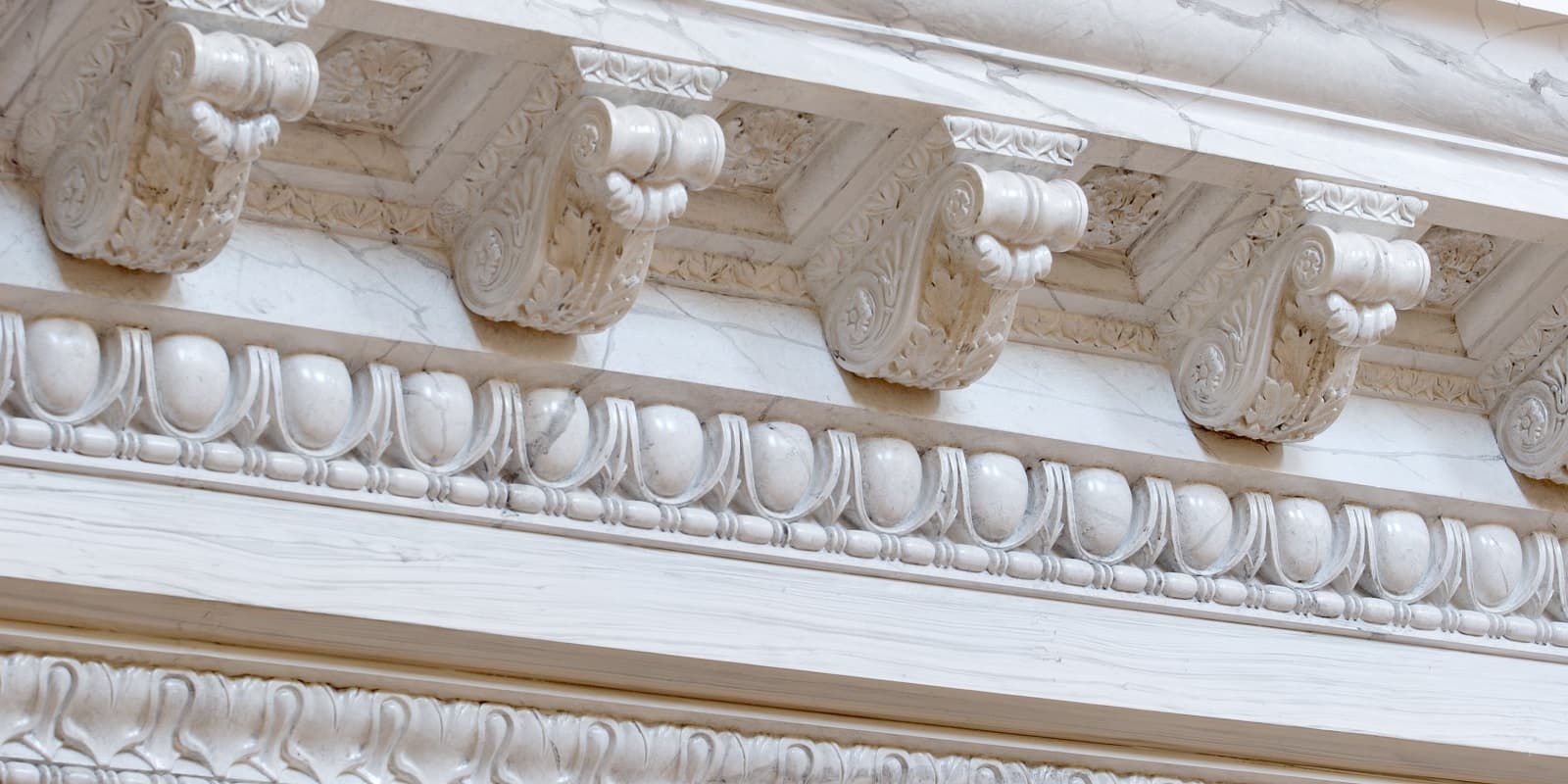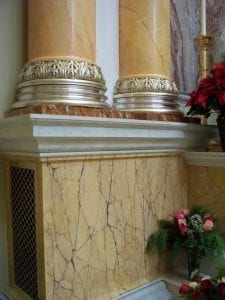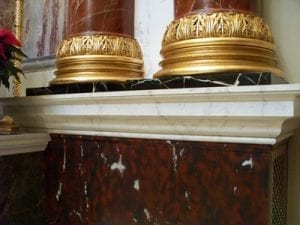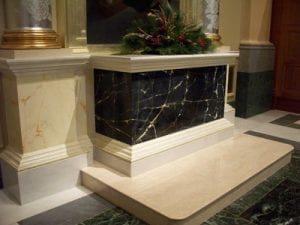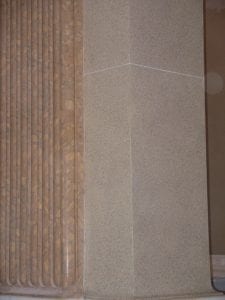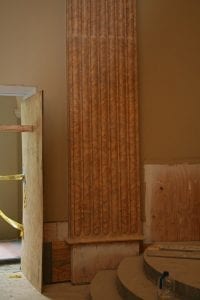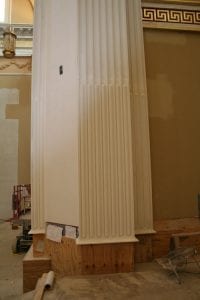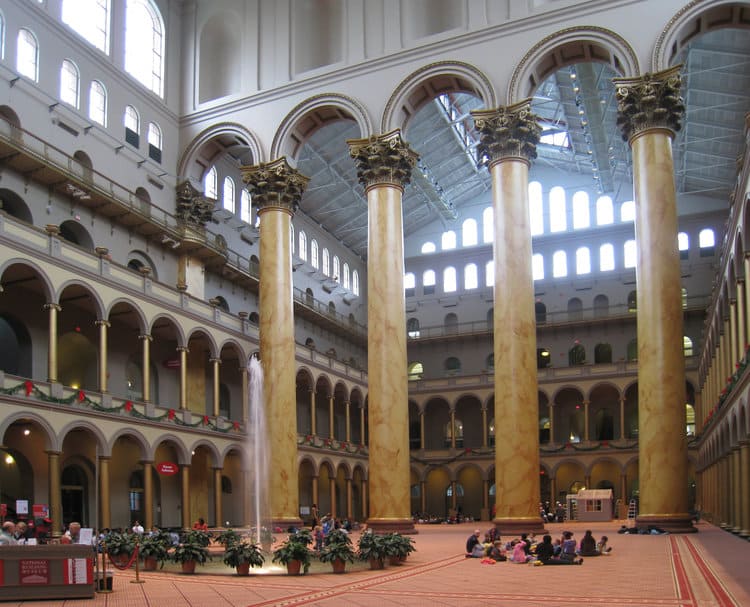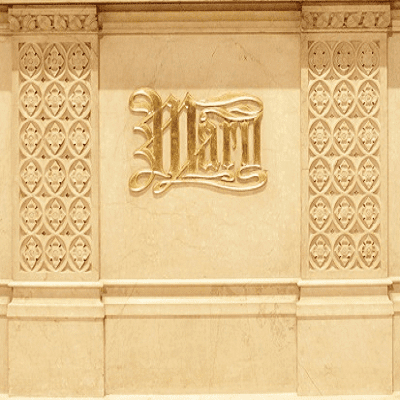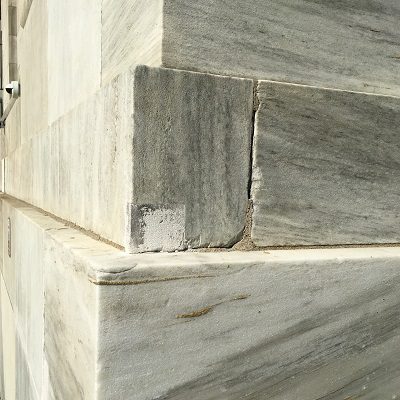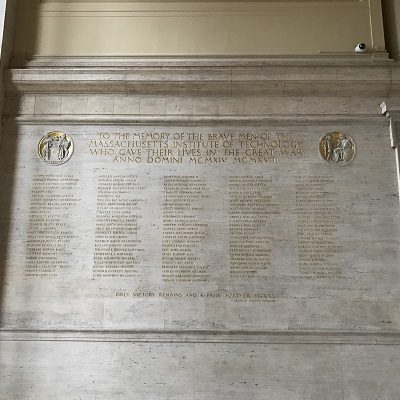The principles of marbleizing are the same as those of woodgraining; the difference is the subject. Faux finishes are finished renderings of the true material. This means they cannot be copies of a real piece of marble or wood, rather an interpretation based on nature of the marble in its placement within the interior. The craftsman must be educated in the nature of each stone to properly execute a convincing product.
Marbleizing technique is most often considered to be used when the true material is too costly or the physical weight of the stone or marble cannot be properly secured in the interior. Although this is often true, faux finishes are many times preferred for the sheer art of the craft.
There are other decisions that led to the necessity for faux finishes. For example, the materials an interior are selected based on the grandeur, size, etc. in proportion to the purpose of the building. The most prized materials are reserved for the highest level of decoration. This fact is important to understand when considering the uses of marbleizing. An interior built out of wood may demand the support of a stronger material both from an architectural perspective and a philosophical perspective to elevate the importance or status of the interior.
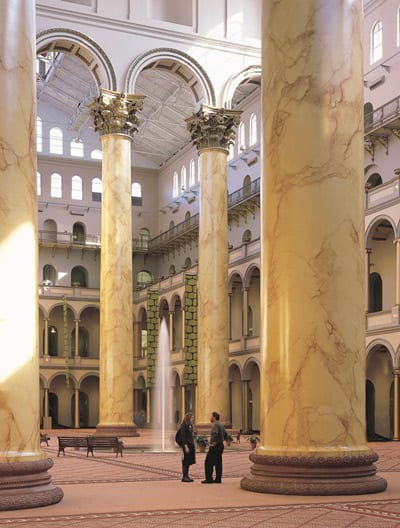
National Building Museum, Marbleizing of columns completed.
Faux finishes in general can be applied over any substrate including glass, sheetrock, plaster, woods, metal, plastic etc. provided the substrate has been properly prepared and primed. The techniques and materials used in woodgraining are similar to that of marbleizing. Marbleizing, like woodgraining, is rarely achieved in one step. It is usually a process of two to four applications. Most marbles and woods are a 2-3 step process. Sometimes an additional 4th step may be necessary to create depth and movement. It is then varnished.
If done properly and appropriate to the architectural elements, the result is both convincing and effective. However, if the work is poorly executed and looks very painterly, it can appear kitsch.
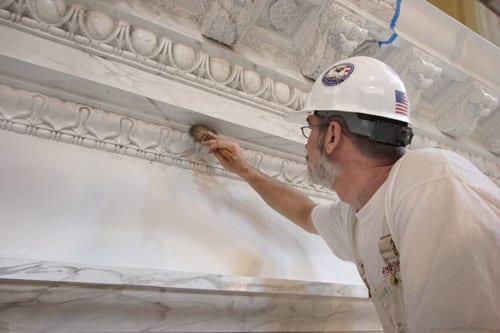
In process of Faux Carrara Marble at the Shrine of Our Lady of Guadalupe.
For Example:
The Shrine to Our Lady of Guadalupe in La Crosse, WI designed by Duncan Stroik, features 28 different faux marbles and 3 faux granite finishes. All of the flat and ornamental plaster was constructed by Canning. The choices of marbles and the overall color scheme was also a part of our scope. Bellow are few examples of the faux marble within the church:

